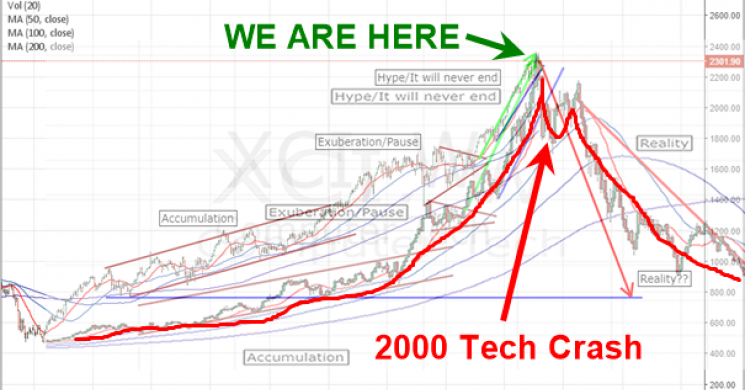
Over the past 13+ months, certain levels of delinquencies in the US have begun to show weakness in the overall economy. What has yet to show any real signs of weakness is Residential Housing. The reason we bring this to your attention today is because we need to keep an eye on many of the underlying facets of the global markets to prepare for what may play out in our trading to be a once in a decade opportunity.
How this will play out in the global markets is somewhat of a guess, but our interpretation is as follows. As the delinquency rates continue to climb, a common and predictable consumer trend will begin – we call it the “protectionist movement”. This is where consumers will spend less and less on extras and more and more on essentials and certain “comforts”. The most common comforts are Booze and Cigarettes as well as simple forms of Entertainment. E-commerce shopping will slow a bit while consumers move away from impulse buying and move more towards focusing on essentials and getting them at their local Walmart or Target.
Additionally, a decrease in consumer activity create another issue in the global economy – it will result in changes in commodity prices and future expectations. Commodity prices have been decreasing for nearly 7+ years now (overall). And the potential for an additional 20~30% decrease is something that we must consider if we believe in our research showing the NASDAQ may be setting up for a DOT COM Do-Over and/or a Head-n-Shoulders top formation. Why? well it is quite simple, we want to find opportunities to profit from commodity moves and we want to be prepared for what may happen in case it does happen.
So, before we get to the commodity and equity charts, let’s take a look at some of the most recent data from the FRED. This first segment should illustrate how Commercial Loans and Credit Card Loans are starting to crack under pressure within the US economy. It does not take a rocket scientist to understand that Retail is associated with Commercial Banking and that the two are tied at the hip in terms of operational success. Failing retail means failing commercial loans. Failing retail also means reduced retail workers and workers income – thus Credit Card delinquencies could be an early warning sign for greater market weakness.


What I find interesting is that Credit Card Delinquencies started increasing about 1.5 ~ 2.0 years prior to each of the last market crisis events while Commercial Loans show a more varied reaction. In 2000, Commercial loans were already weakening many years prior to the DOT COM collapse. Yet, in 2008, Commercial Loan Delinquencies turned abruptly about 1 year prior to the collapse. How could one, then, read the current Commercial Loan weakness? We’ve seen a nearly 100% increase in delinquencies (as a percentage move; from 0.7% to roughly 1.5%) in a fairly short period of time.
How much capital are we talking about is within these pools?
Well, we are talking about nearly $4.4 Trillion in consumer debt and revolving debt according to FRED data. There is no doubt we have seen a BOOM CYCLE for consumer debt and revolving debt in the last 6 years.
Asset valuations are even more interesting. How much are we talking about with regards to Commercial Debt and Residential Housing Market Debt? Combined, nearly $4.3 Trillion total debt between Commercial and Residential loans as shown in the charts below.


Well, assuming the size of these markets as well as the potential for an increase of nearly 100~200% increase in current delinquency rates (from roughly 1.5% to nearly 3% or 4.5%), we can attempt to predict that at some point a contagion process will kick in which may result in an 8~16% contraction in these markets. This would equate to $350B to $705B contraction in each market. Reflecting a total of nearly $700B to $1.5T total market contraction (possibly more).
It all depends on how the market facets play out. If any type of global market contagion complicates this rise in delinquencies within the US (such as China, South America, Europe or others), we could see a much more dramatic move – possibly as much as a 25% contraction in the debt markets because of non-performing loans increase. This would equate to an increase of 300%~500%+ from the lowest delinquency rates.
Current Foreclosure rates are relatively low compared to historical level. Yet this can change. We would watch these level and Residential delinquency rates for any signs of weakness. Corporate debt is also an issue with nearly $3.4 Trillion currently outstanding.
In short, we are cautiously watching the global markets for signs of continued weakness and signs of a debt contagion situation. There has been quite a bit of news that global debt is an issue with China, Italy, Venezuela, Greece, Puerto Rico and others. Our concern is this debt issue turns into a cancer like disease for the rest of the globe. And in our opinion, it would be rather easy for government, banking or corporate institutions to become a “black hole” that creates another crisis event.
Now, we get to the fun part of our research. Assuming our Head-n-Shoulders Top formationcontinues to play out and the US and Global markets continue to play the Credit/Debt game (and we are really watching China as recent news from the IMF and others is that China is trying to hide massive debt defaults), what do we expect the markets will do and how can we profit from these moves?
We will be sharing this information in a couple days so be sure you visit our website and optin to our free newsletter list for these free updates. Or you can join the hundreds of members who never miss an update or trade setup in the markets.
Join us today at www.ActiveTradingPartners.com







